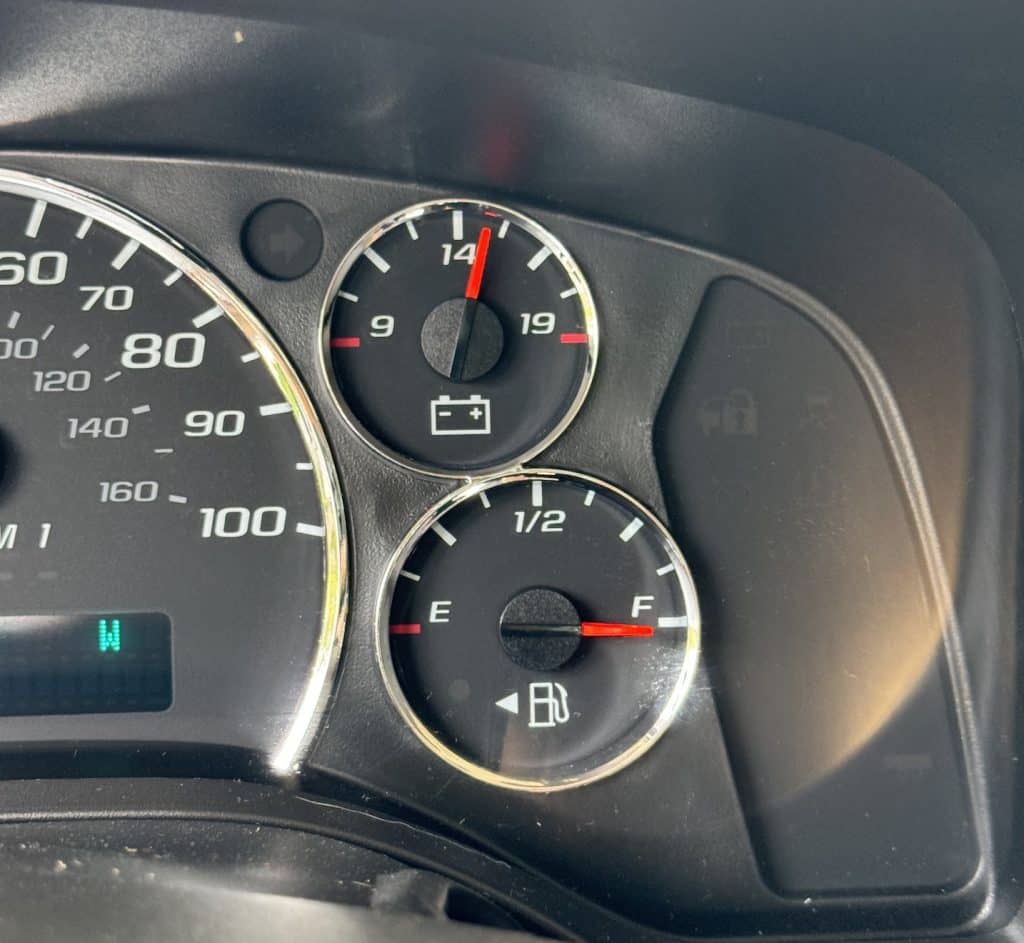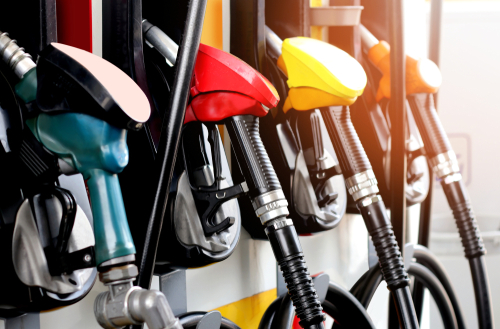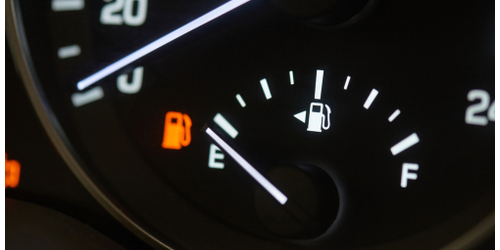Have you ever wondered how long that gas in your tank can sit before it starts causing trouble? Well, buckle up, because we’re about to take a little joyride through the world of fuel freshness.

Regular gasoline typically remains usable for about three to six months when stored in your car’s fuel tank. After that, it starts to degrade and can lead to some pretty unpleasant consequences for your beloved vehicle.
But don’t worry, you’re not alone in this fuel-ish predicament.
Ever notice how your car seems a bit sluggish after sitting idle for a while? That might be your gasoline throwing a little tantrum. As it ages, gas can lose its spark, quite literally.
It starts to break down, forming gummy deposits that can clog up your fuel system faster than rush hour traffic.
But fear not, there are ways to keep your fuel fresh and your car running smoother than a freshly paved highway.
Key Takeaways
- Gasoline typically remains usable for 3-6 months in your car’s tank
- Bad gas can cause engine performance issues and damage fuel system components
- Using fuel stabilizers and keeping your tank full can help extend gasoline’s shelf life
The Life Span of Gasoline
You might be surprised to learn that the fuel in your tank has an expiration date. Gasoline doesn’t last forever, and its lifespan can vary depending on its composition and storage conditions.
Chemical Deterioration and Shelf Life
That liquid gold in your tank won’t stay golden forever. Regular gasoline has a shelf life of three to six months, while premium fuel might stretch to nine months. Diesel? It’s the marathon runner of fuels, lasting up to a year.
But why does gas go bad? It’s all about chemistry, folks. Over time, gasoline oxidizes and loses its combustibility. It’s like leaving a soda open – it goes flat, but with more explosive consequences.
Signs of stale gas include:
- Engine running rough
- Stalling while speeding
- Check engine light throwing a fit
- Gas smelling sour (like your mood when you realize you need to drain the tank)
Ethanol-Blended vs. Pure Gasoline

Now, let’s talk about the booze in your gas – ethanol, that is. Ethanol-blended gasoline, while eco-friendly, is the party animal that doesn’t know when to quit. It tends to absorb water from the air, leading to faster degradation.
Pure gasoline, on the other hand, is the sensible cousin. It’s more stable and can last longer in your tank. But here’s the kicker – most gas stations nowadays serve up ethanol blends.
To keep your gas fresh:
- Fill up frequently
- Use fuel stabilizers for long-term storage
- Keep your tank at least half full to reduce condensation
Recognizing Bad Gas
Bad gas can wreak havoc on your car’s performance. Let’s take a look at how you can spot this pesky problem before it leaves you stranded.
Symptoms in Your Vehicle

Your car might start acting like a temperamental toddler if it’s got a belly full of bad gas. You could notice some engine performance issues, like sputtering or stalling.
It’s as if your trusty steed suddenly decided to take a nap in the middle of your commute.
Don’t be surprised if your car starts guzzling fuel faster than you can say “fill ‘er up.” Bad gas can make your vehicle thirstier than usual.
You might find yourself at the pump more often, wondering if your car developed a secret addiction to premium.
The smell is another dead giveaway. If your fuel tank starts reeking like a forgotten gym bag, you’ve likely got some funky gas on your hands. Trust your nose – it knows!
Check Engine Light: A Telltale Sign
Ah, the dreaded check engine light. It’s like your car’s way of saying, “Houston, we have a problem.”
When bad gas is the culprit, this little light might start flickering like a disco ball.
Don’t ignore it! Your car’s computer is smart enough to detect when something’s off in the fuel system.
It’s trying to tell you, “Hey buddy, I don’t like what you’re feeding me!”
If the light comes on shortly after filling up, it’s a good hint that you might have gotten a bad batch of gas.
Time to get your sherlock hat on and investigate further. Remember, your car can’t text you its problems, so this light is its SOS signal.
Effects of Bad Gas on Car Components
Bad gas can wreak havoc on your car’s fuel system. It’s like feeding your beloved ride a nasty meal that’ll give it indigestion for days.
Let’s dive into the nitty-gritty of how this subpar fuel affects crucial components.
Fuel Injectors and Filter
Your fuel injectors are like tiny garden sprinklers, but instead of water, they spray gasoline.
Bad gas can clog these delicate nozzles faster than you can say “check engine light.”
Imagine trying to drink a thick milkshake through a coffee stirrer – that’s what your injectors feel like with gummed-up fuel.
The fuel filter, your car’s bouncer against contaminants, works overtime with bad gas.
It’ll trap larger particles, but smaller ones might sneak through. Over time, this can lead to a clogged filter that restricts fuel flow.
Your engine might start sputtering like it’s had one too many at the gas station.
Corrosion of Fuel Lines
Bad gas is like inviting rust to a metal party in your fuel lines.
As fuel degrades, it can become more acidic, eating away at the inner lining of your fuel lines.
This corrosion is sneaky – you won’t see it happening, but you might smell it when leaks start.
Water contamination in old gas is a major culprit here. It’s like introducing your fuel system to its worst enemy.
The resulting rust can flake off, creating a double whammy of corrosion and potential blockages downstream.
Optimal Storage for Gas Longevity
Keeping your gas fresh is like preserving a fine wine, minus the fancy cork and cellar.
Let’s dive into the nitty-gritty of how you can extend your fuel’s shelf life and keep your car running smoothly.
Proper Storage Techniques
First things first, your gas tank is not a long-term storage unit. If you’re planning to park your ride for a while, fill ‘er up!
A full tank leaves less room for moisture, which is gasoline’s arch-nemesis.
Think of your car as a temperamental diva – it doesn’t like extreme temperatures.
Park in a cool, dry place to avoid those pesky temperature fluctuations. Your garage is perfect, but if you don’t have one, a car cover can be your fuel’s best friend.
Keep an eye on that gas cap too. A loose cap is like leaving the lid off your soda – it’ll go flat faster than you can say “premium unleaded.”
The Role of Fuel Stabilizers
Now, let’s talk about fuel stabilizers – the unsung heroes of the gas world.
These magical potions can extend your gas life from months to years. They’re like Botox for your fuel, keeping it young and perky.
Adding a stabilizer is easy peasy. Just pour it in before you fill up, and let your engine run for a few minutes to mix it all up.
It’s like stirring cream into your coffee, but way less tasty.
For long-term storage, stabilizers are a must.
They fight off the dreaded “gum and varnish” that can clog up your engine faster than a poorly timed dad joke at Thanksgiving dinner.
Refreshing Your Fuel System
Got old gas? Don’t worry, it’s not the end of the world.
Let’s explore how to breathe new life into your fuel system and keep your car running smoothly.
Removing Old Gas from the Tank
First things first, you’ll want to get that stale gasoline out of there. Siphoning is the tried-and-true method, but be careful not to get a mouthful!
If you’re not keen on the taste of petroleum, invest in a hand pump or an electric pump.
For smaller engines, like lawnmowers, you might be able to drain the gas through the carburetor. Just make sure you’ve got a container ready to catch that liquid gold (or, well, slightly tarnished gold).
Once you’ve removed the old gas, give your tank a quick inspection. If you spot any rust or debris, it might be time for a more thorough cleaning.
When to Opt for New Gas
So, when should you bite the bullet and fill up with fresh gasoline?
If your car’s been sitting for 3-6 months, it’s probably time for a refresh. But don’t panic if it’s only been a few weeks – your fuel system isn’t that picky.
If your gas has a funky smell or looks darker than usual, it’s definitely time for a change. Trust me, your engine will thank you.
Consider adding a fuel stabilizer if you know your car will be sitting for a while. It’s like a multivitamin for your gas tank, keeping things fresh for longer.
Frequently Asked Questions
Gas sitting in your car can cause various issues. Let’s dive into some common questions about fuel storage and its effects on your trusty ride.
What are the effects of letting a car sit with gasoline over an extended period?
Letting your car sit with gas for too long can lead to a whole heap of trouble. The fuel can degrade and cause performance issues, like a rough idle or stalling.
You might also notice that pesky check engine light popping on.
Your car might even refuse to start, leaving you stranded in your driveway. Talk about a buzzkill!
Can aged gasoline be refreshed to use in my vehicle?
Sorry, folks, but there’s no magic potion to rejuvenate old gas. Once it’s gone bad, it’s time to bid it farewell.
Your best bet is to drain the tank and refill with fresh fuel.
Think of it like trying to revive a stale sandwich – sometimes, you just gotta start fresh.
What’s the shelf life of gasoline in a car when treated with fuel stabilizer?
Adding a fuel stabilizer can extend your gas’s lifespan considerably.
While untreated gas might last 3-6 months, stabilized fuel can hang in there for up to a year or even longer.
It’s like giving your gasoline a little fountain of youth treatment. Just remember to add the stabilizer when the gas is fresh for best results.
How does the lifespan of fuel in a gas can compare to being in a vehicle?
Fuel in a gas can might actually outlast the stuff in your car’s tank.
Why? Because your sealed gas can prevents moisture and contaminants from sneaking in.
Your car’s fuel tank, on the other hand, is constantly exposed to the elements. It’s like comparing a hermit to a social butterfly – one’s bound to age a bit faster.
Is it safe to mix fresh fuel with gasoline that’s been sitting in my car?
Mixing old and new gas isn’t ideal, but it’s not the end of the world.
If your old gas isn’t too far gone, adding some fresh fuel can help dilute any negative effects.
Think of it like adding fresh ingredients to yesterday’s leftovers – it might improve things, but don’t expect miracles.
What’s the maximum amount of time my car can sit before the gas goes bad?
The magic number here is about 3-6 months for regular gasoline.
Premium gas might last a bit longer, up to 9 months. Diesel? You’ve hit the jackpot with up to a year of shelf life.
But remember, these are just guidelines. Your mileage may vary, pun absolutely intended!
